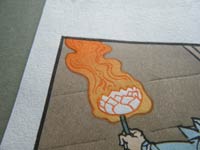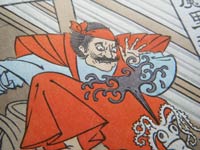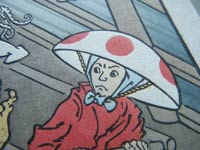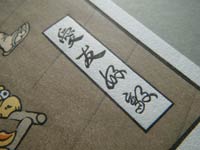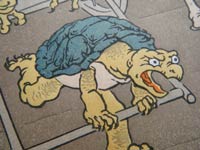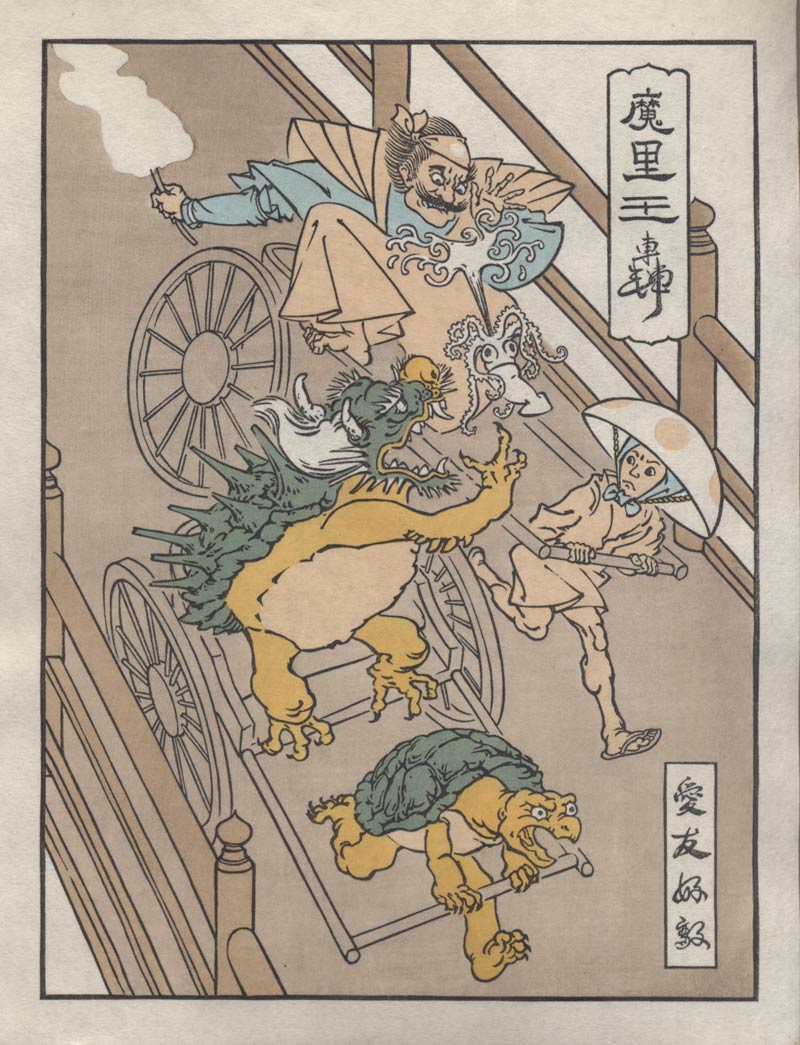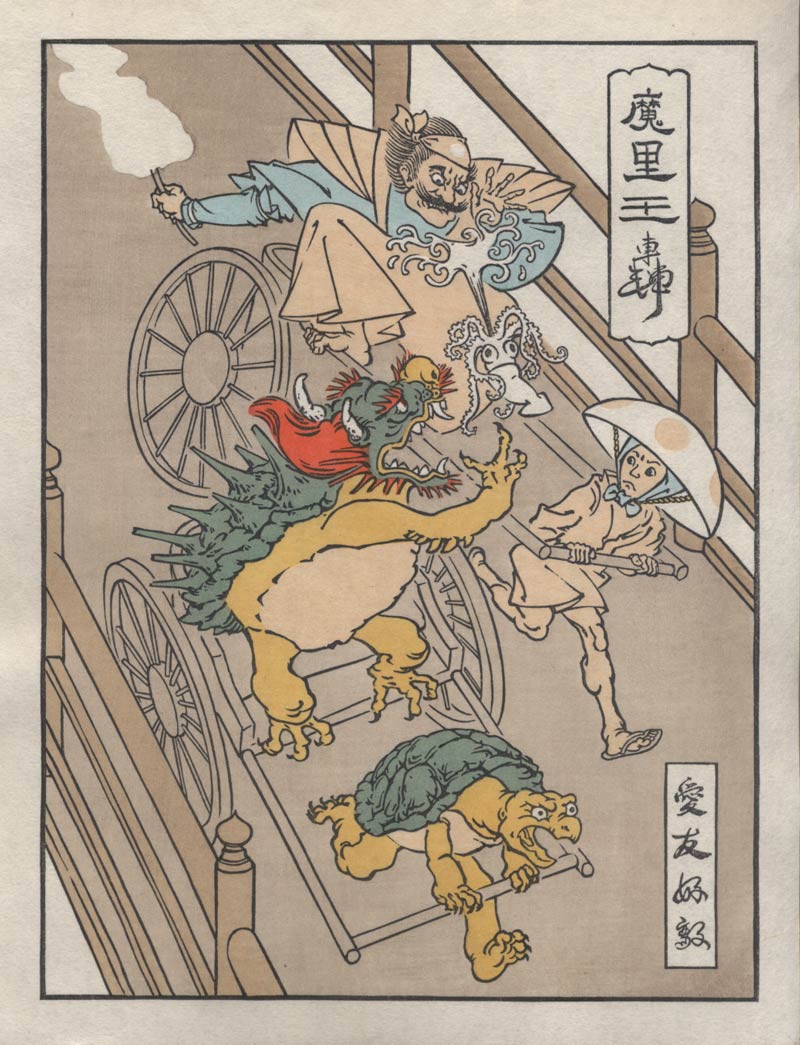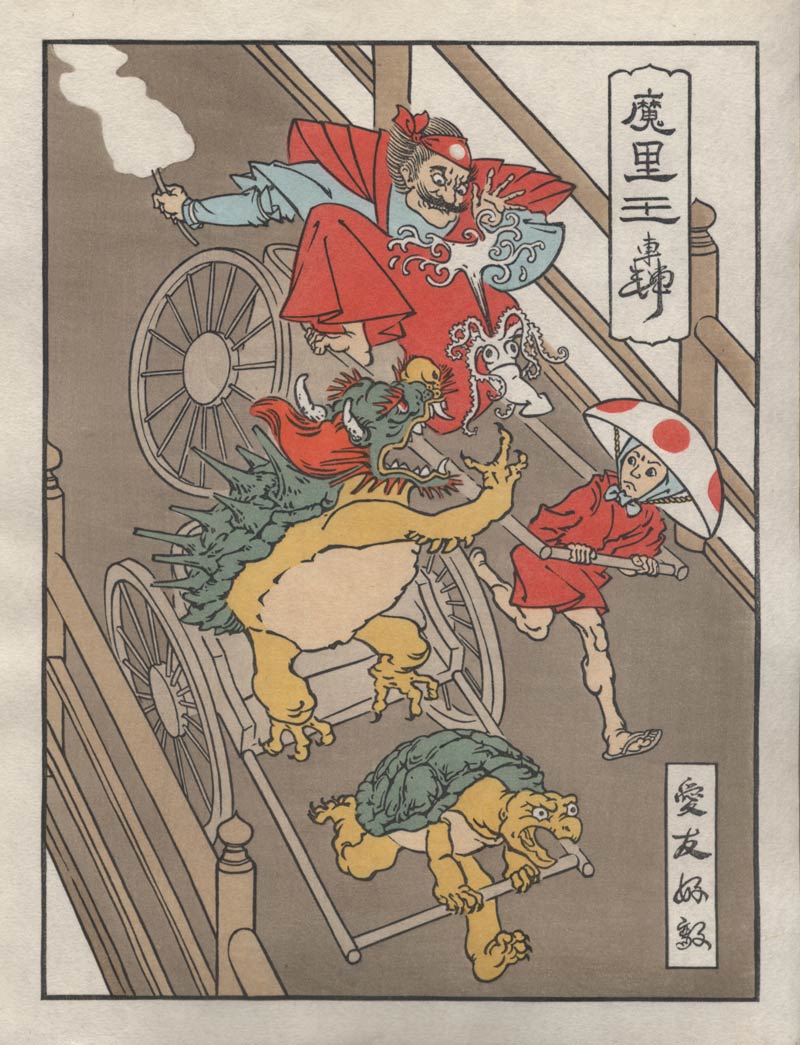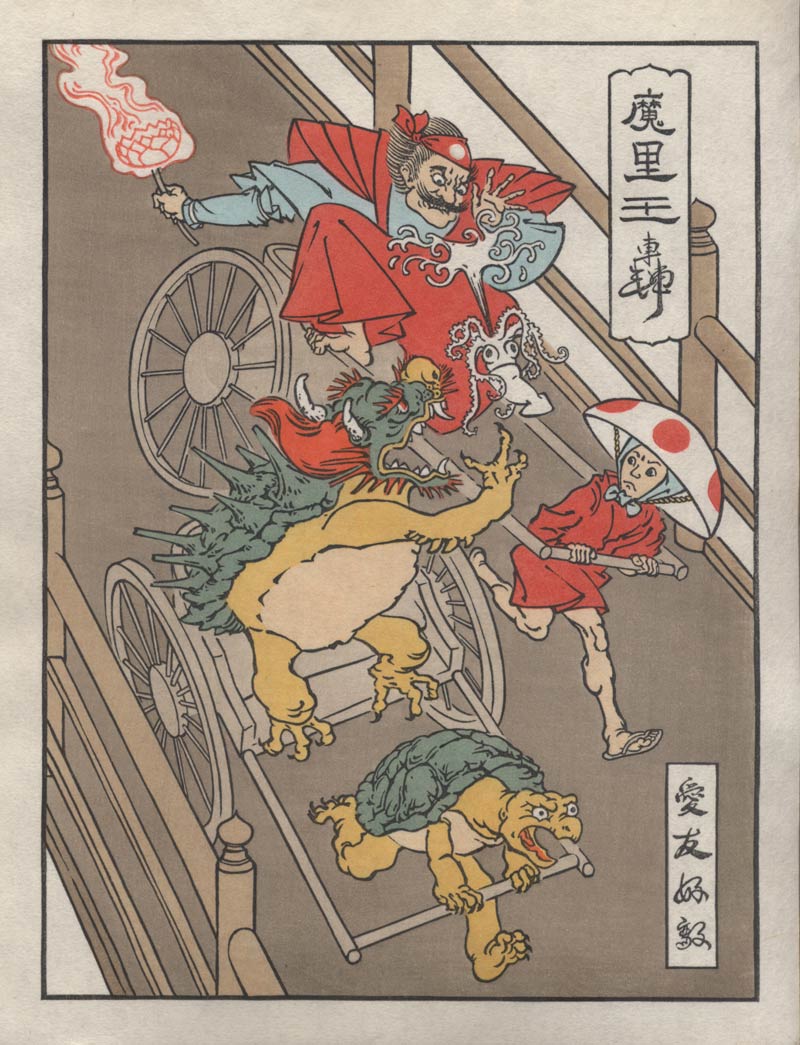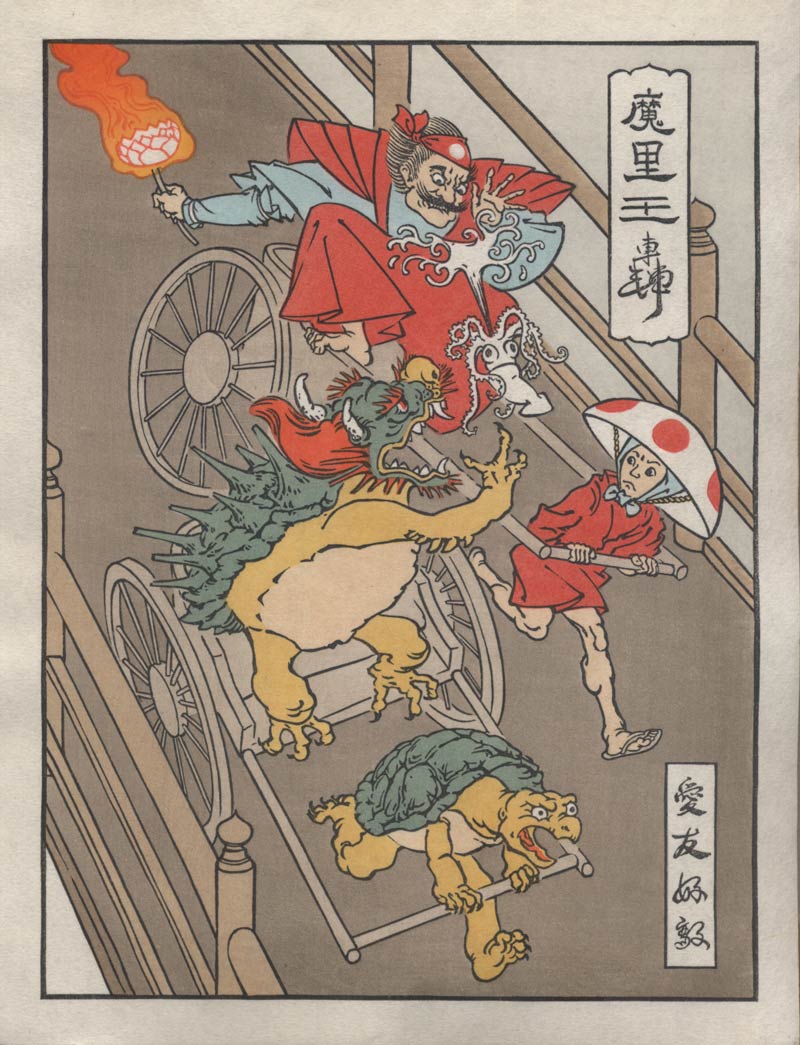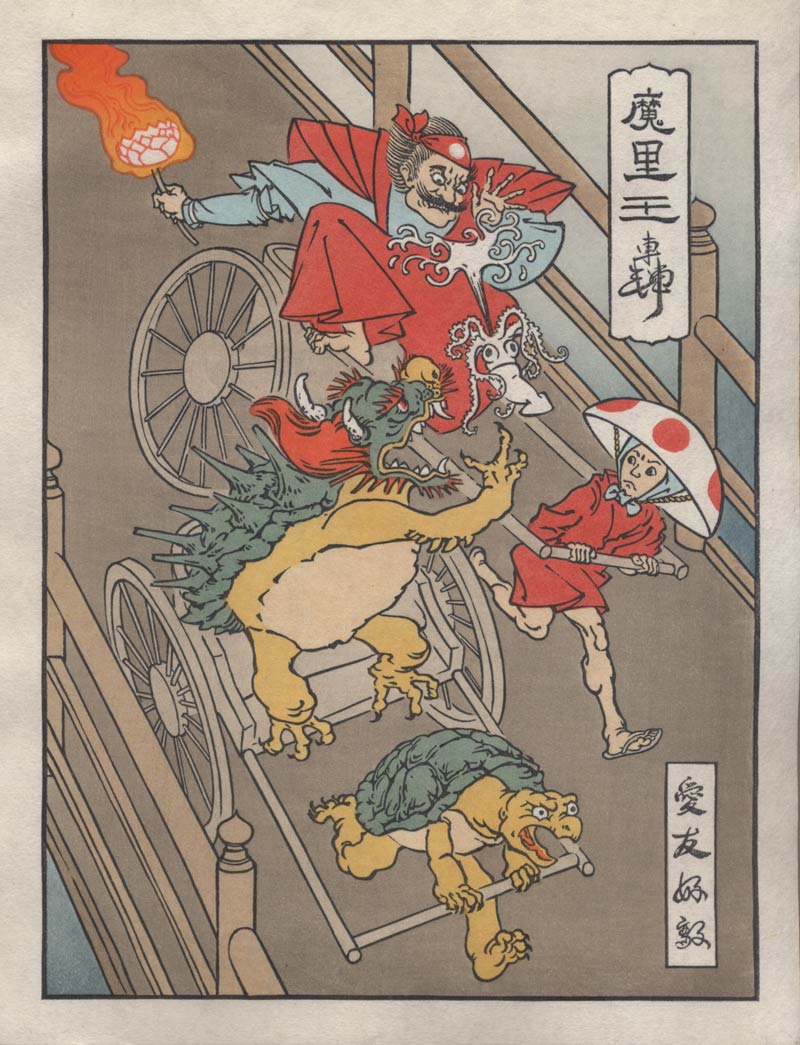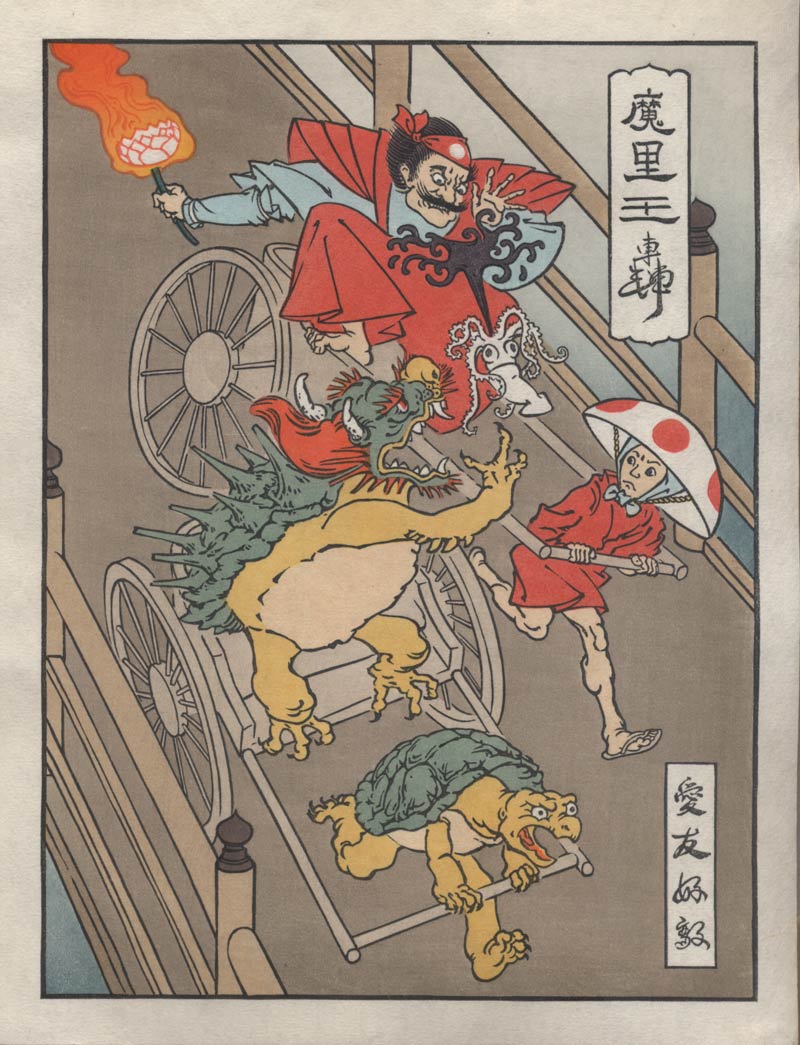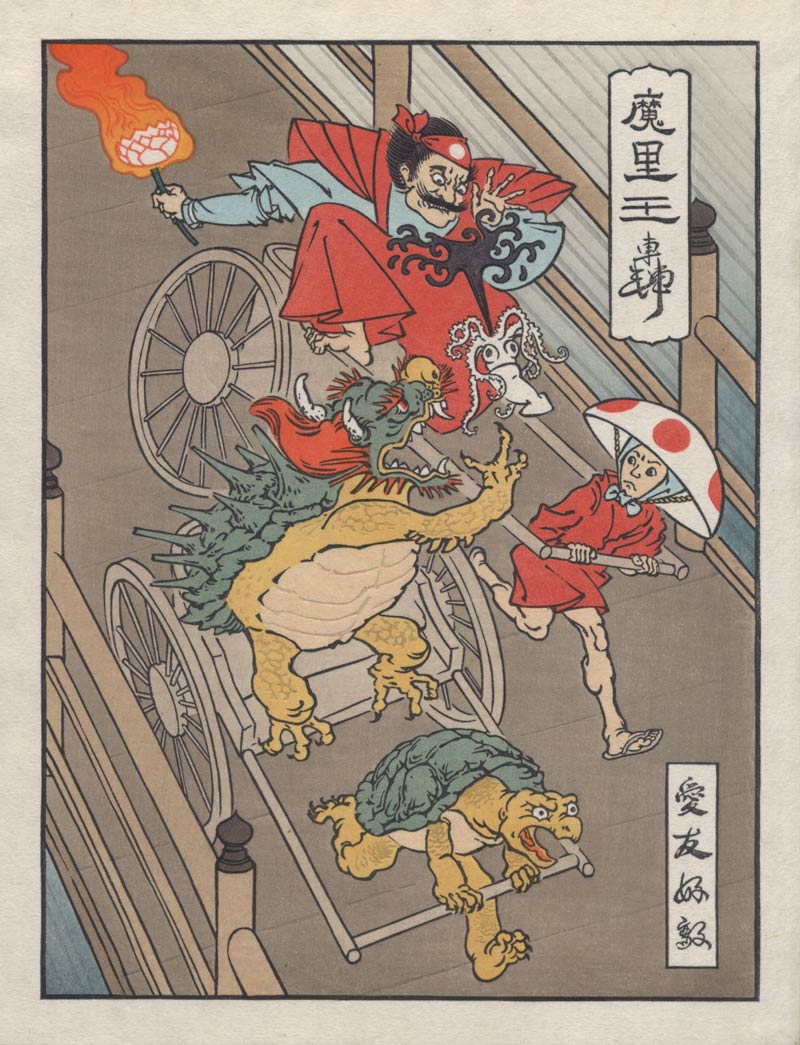'Ukiyo-e Heroes'
Background on the series ...
Who we are ...
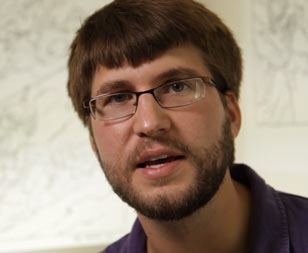 It was a fortunate mix of ingredients that formed author/illustrator Jed Henry. Barefoot summers on the Ohio River. Painting trips in the country with his mom. A few years spent roaming the streets of Tokyo. Jed thanks his lucky stars for all these experiences, and draws on them daily to flavor his books. Jed believes that in telling a story, both the teller and the reader need to be having a good time. When Jed creates an illustration, he's always surprised by what happens on the page, and he hopes his viewers will be delighted as well. Jed currently lives in small town in the Rocky Mountains with his wife and four children. When he's not writing and illustrating, Jed makes animated films. One of his films has received a college Academy Award from the Academy of Motion Picture Arts and Sciences.
It was a fortunate mix of ingredients that formed author/illustrator Jed Henry. Barefoot summers on the Ohio River. Painting trips in the country with his mom. A few years spent roaming the streets of Tokyo. Jed thanks his lucky stars for all these experiences, and draws on them daily to flavor his books. Jed believes that in telling a story, both the teller and the reader need to be having a good time. When Jed creates an illustration, he's always surprised by what happens on the page, and he hopes his viewers will be delighted as well. Jed currently lives in small town in the Rocky Mountains with his wife and four children. When he's not writing and illustrating, Jed makes animated films. One of his films has received a college Academy Award from the Academy of Motion Picture Arts and Sciences.
 Woodblock printmaker David Bull has been at his craft longer than Jed has been alive! Time spent on something is not a guarantee of competence, but in Dave's case, the tens of thousands of hours spent at his workbenches do seem to have been spent effectively, and he now finds himself in the position of holding world-class skills in what is pretty much a completely unwanted field! He lives in a river-side studio/workshop in an outlying suburb of Tokyo, where over the past couple of years he has undertaken the challenge of transforming his one-man shop into a collective workshop of skilled craftspeople. When Jed broached the possibility of creating a full set of 100 prints in this 'Heroes' series, Dave quaked a bit, because he knows exactly what it would involve ... he's done that once already!
Woodblock printmaker David Bull has been at his craft longer than Jed has been alive! Time spent on something is not a guarantee of competence, but in Dave's case, the tens of thousands of hours spent at his workbenches do seem to have been spent effectively, and he now finds himself in the position of holding world-class skills in what is pretty much a completely unwanted field! He lives in a river-side studio/workshop in an outlying suburb of Tokyo, where over the past couple of years he has undertaken the challenge of transforming his one-man shop into a collective workshop of skilled craftspeople. When Jed broached the possibility of creating a full set of 100 prints in this 'Heroes' series, Dave quaked a bit, because he knows exactly what it would involve ... he's done that once already!
What this is about ...
Perhaps the easiest way to explain our project is to quote from the introduction video Jed produced for the Kickstarter website:
I'm taking all my favorite video game heroes, and putting them back in the ukiyo-e style
I'm ... obsessed with illustration. It's more than a full-time job for me. It's my hobby, my passion. It keeps me up all night working on my next great drawing. And then there's video games. There are a lot of games that have left a real impression on me - games that really stuck inside my soul. So I was sitting there one day, thinking, how can I combine all these things I love? And then I came up with this project - Ukiyo-e Heroes!Ukiyo-e is a Japanese word. Ukiyo was the pop culture movement in old Japan. The Ukiyo crowd were the trendsetters of their day. Actors, artists, entertainers. And 'e' means pictures. So one interpretation of Ukiyo-e could be pop culture pictures from old Japan. And just like Japan had a huge pop-culture scene back then, Japan still exports tons of popular characters and stories. Especially in the form of video games. And it's pretty obvious that when modern Japanese designers were making the first video games, they looked back on their own artistic heritage for inspiration.
I think one reason that modern video games are so much fun is because Japan invented them - a culture that's always had really fun art. And that's what my project is about - having fun. I'm taking all my favorite video game heroes, and putting them back in the ukiyo-e style. It's surprising how easily they fit this old art form. Things really haven't changed that much in 200 years ...
I've made a number of designs, each one depicting a different video game, and these will all be available from me as digitally produced posters. I didn't want to stop there though, and had the idea that it might be possible to create actual woodblock prints too. So I contacted my friend Dave Bull in Tokyo, to see if this might perhaps be possible.
I was in luck. Dave was so excited about my designs, he immediately offered to make a print of one of them, and jumped right in and began work, even though I could not guarantee that we would be able to sell them. The blocks for this design are now carved and ready, and Dave has produced some proofs for me.
Things snowballed from there, and by the time the smoke had cleared at the end of the $300,000+ Kickstarter campaign, over 2,400 people had backed the project for a total of more than 4,000 of the giclée versions of the designs, and more than 1,200 actual woodblock prints. The 'Ukiyoe Heroes' concept had been well and truly 'validated'.
How the prints are made ...
Image gallery: Here are a few closeups of some of the prints.
We have prepared a series of slides showing the complete process of printing the 'Rickshaw Cart' design. To see the images as large as possible, pull your browser window to a tall shape before clicking this image to start the sequence ...
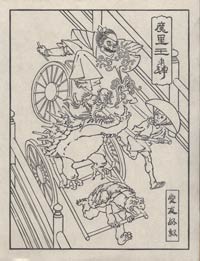
From Dave ...
Most of the text above on this page is taken from Jed's introduction to this work, but there is another part of the story that I think needs to be told ...
Anybody with even the slightest interest in traditional Japanese art 'knows' what ukiyo-e is, and we're all basically familiar with those well-known images of actors, beauties, and Edo period scenes. We may not remember names and dates of all the designers, etc., but we have an overall image of an art style that flourished wonderfully for a period of some hundreds of years.
The reality though, was quite different. During the long history of the genre, there were any number of times when it became moribund and fell out of favour. This was sometimes due to government suppression, and sometimes simply to changes in fashion and social trends. There were on occasion quite long periods when very few prints were created and sold.
So how did the genre survive? Well, I very much recommend James Michener's 'The Floating World' for a thorough exposition of this, but I can bring you the main point here: each time the genre became stale or moribund, it was brought back to the mainstream again by interesting and dramatic designs. Men came along who put things down on paper that had not been seen before, things that were immediately appealing - and more important, meaningful - to the people of the time.
I think you can see where I am going with this. The Japanese traditional print has been totally moribund for easily over a generation now. Nobody has found a message that properly suits the genre - in style, in content, or in meaning for the 'audience'. Until now. Jed Henry has come up with a concept that is going to do this, here and now in our own day - and as you can see from the images above, he clearly has the skills to pull it off.
I am so excited about this project that I can hardly sit still. At 60 years of age, I have developed a pretty good 'base' of knowledge and fluency in the techniques of this genre. I am now ready to use this base to create some spectacular work using Jed's astonishingly creative and interesting designs.
Mr. Michener is gone, and won't be updating his book, but that's something for a later analyst to take care of. In the 'here and now', Jed and I have some work to do! I hope we can count on your support!
Dave Bull, August 2012
Seseragi Studio, Tokyo
